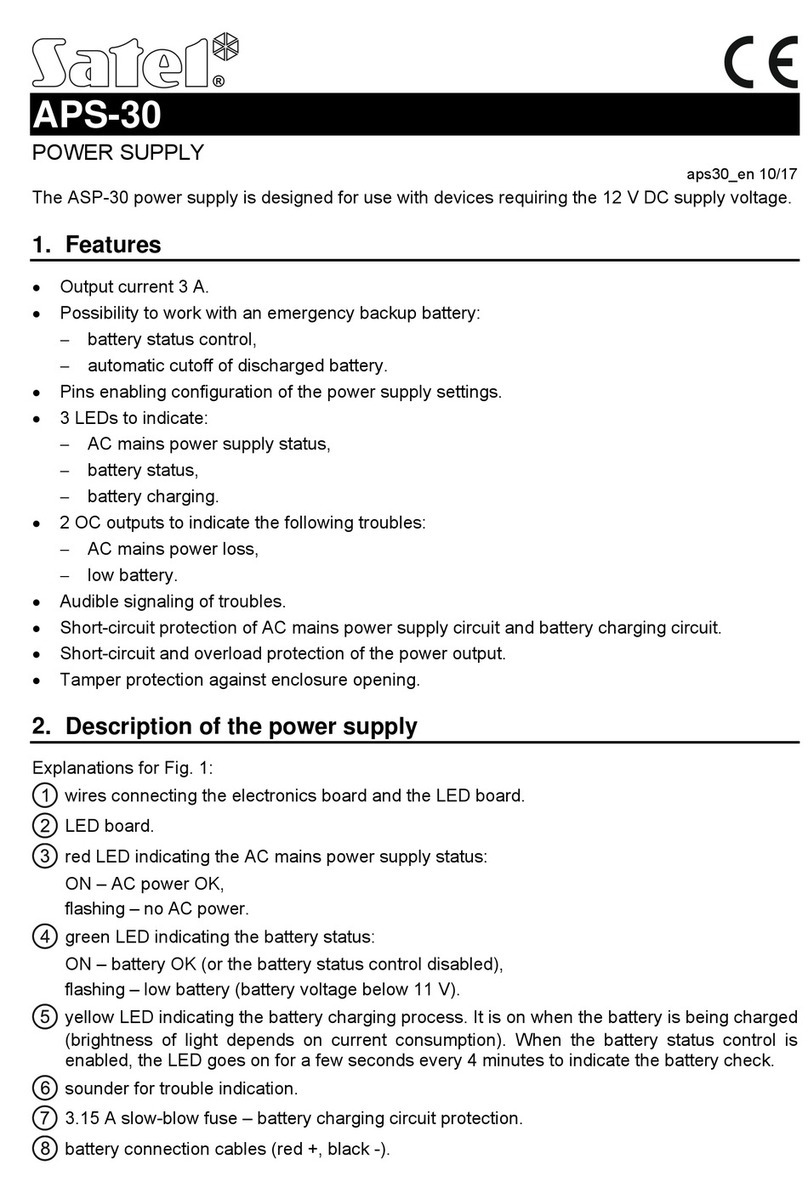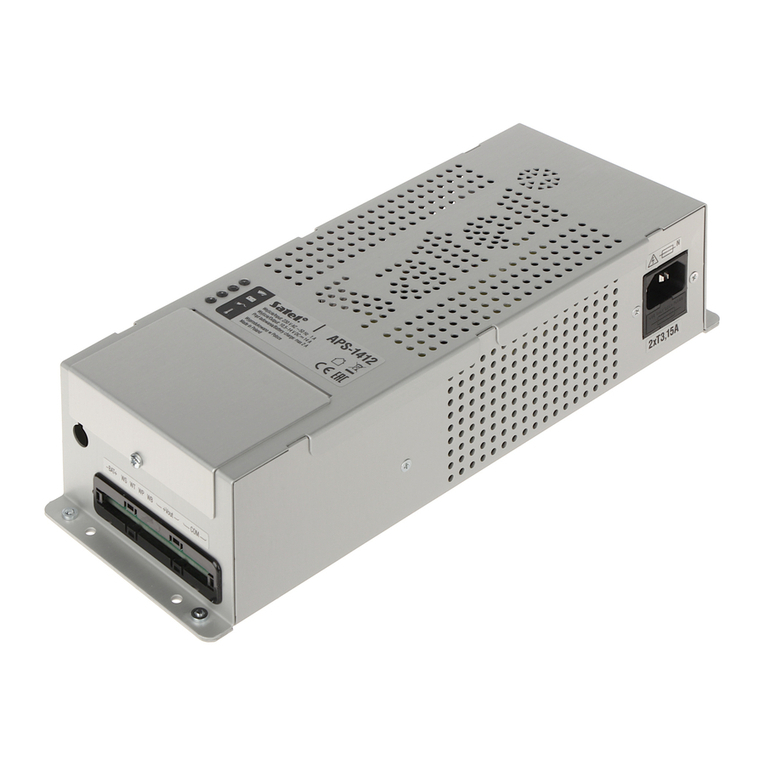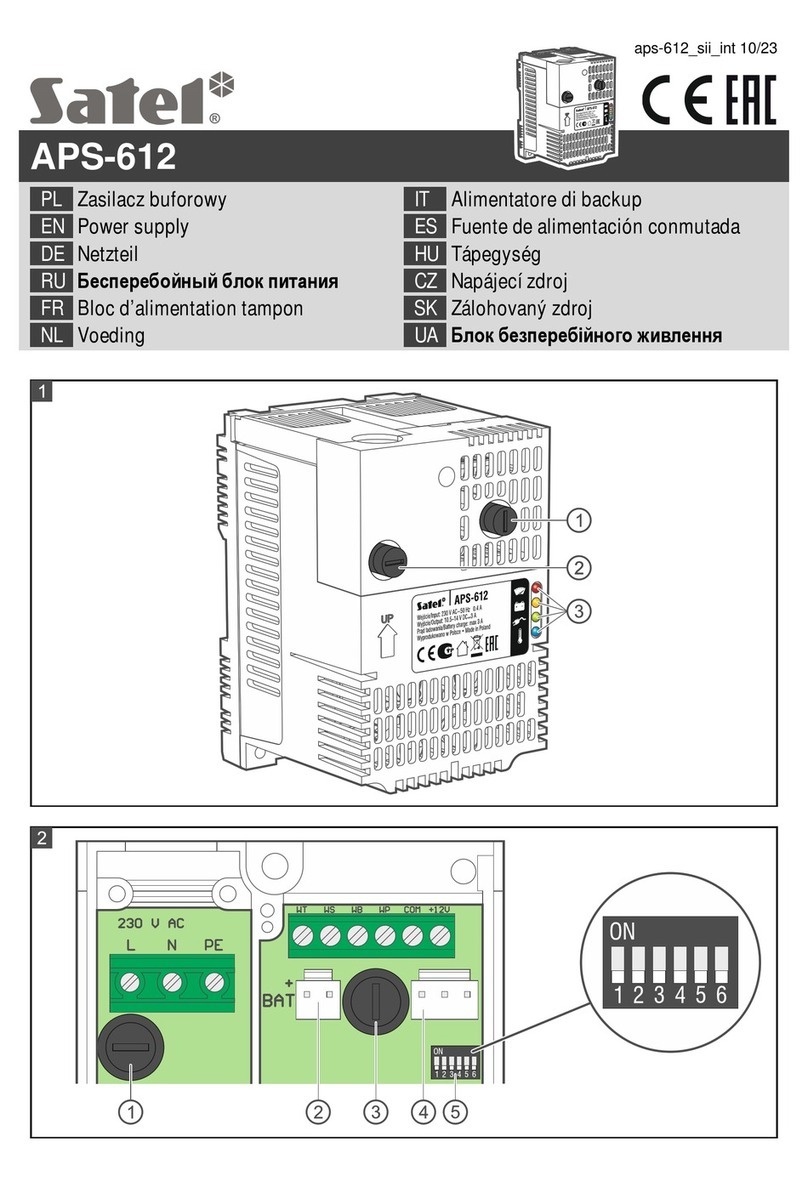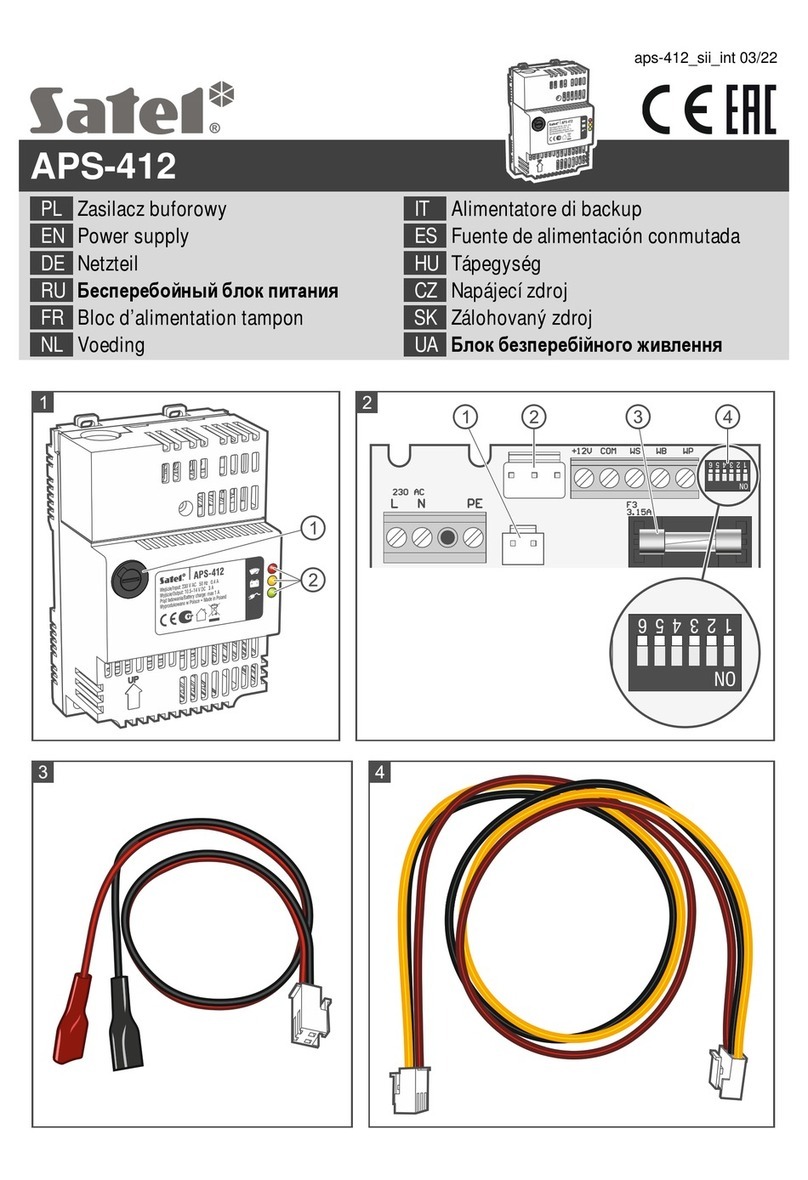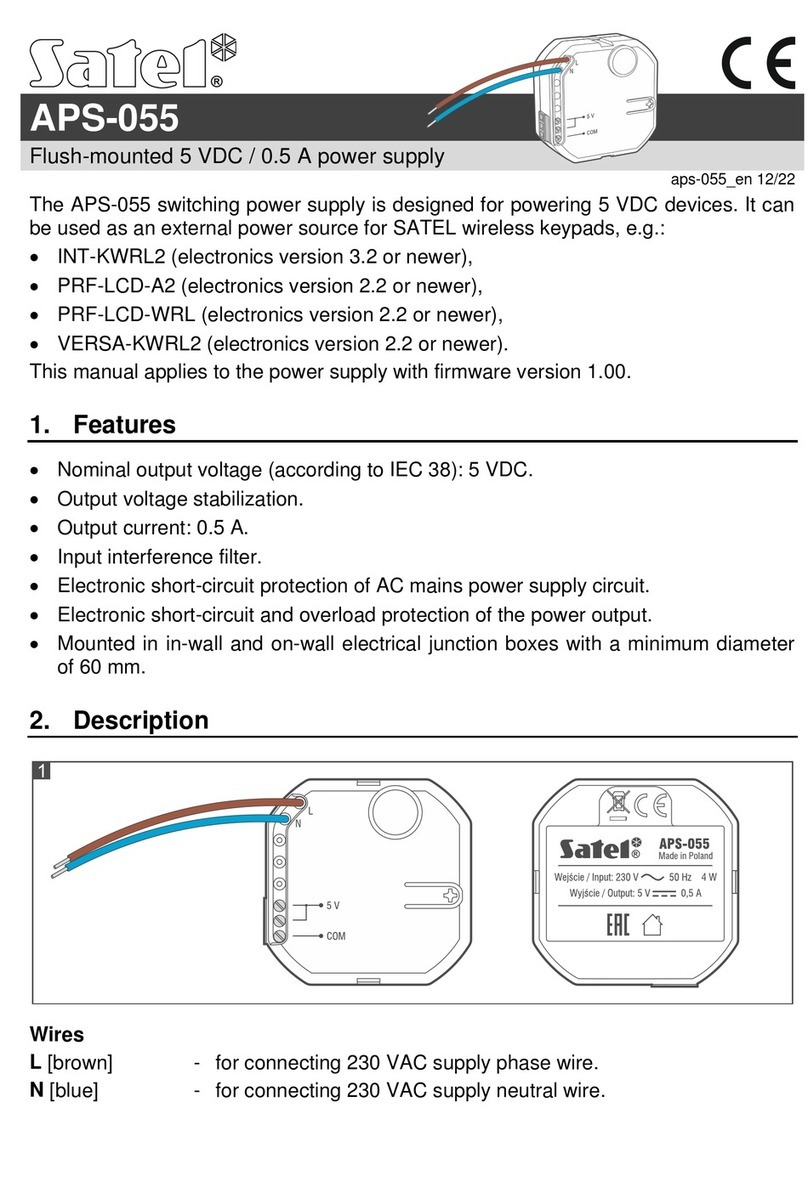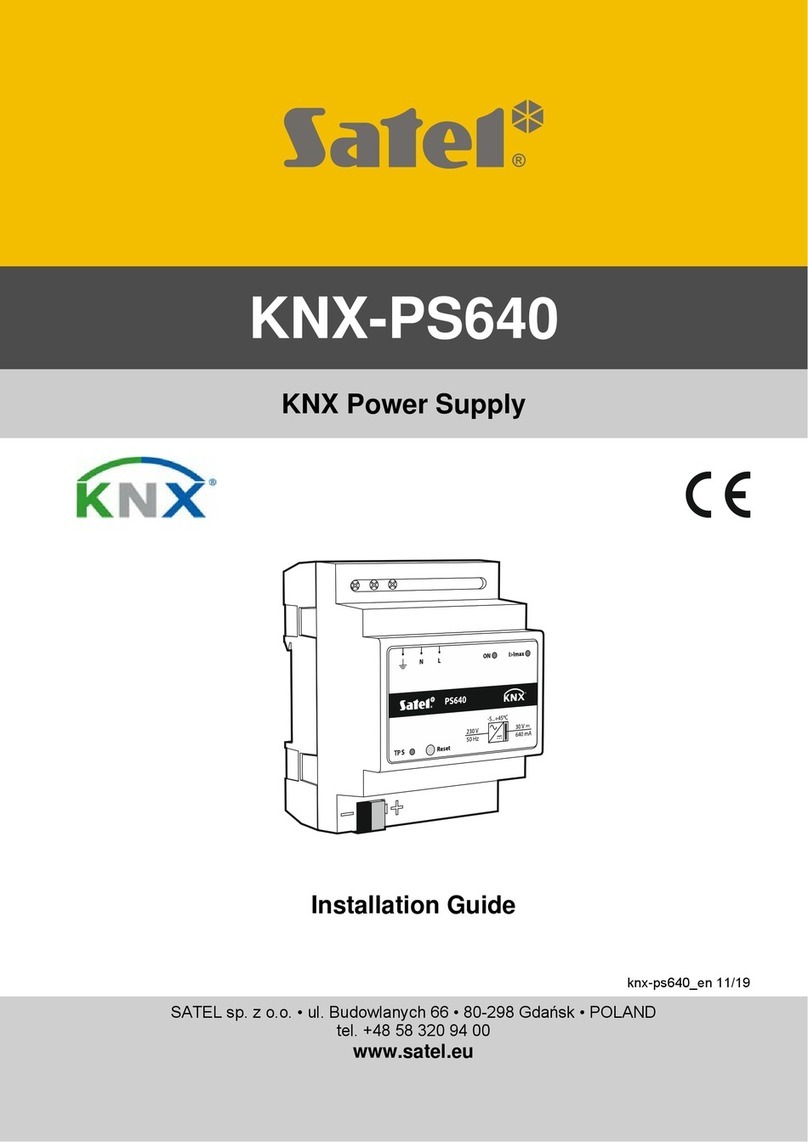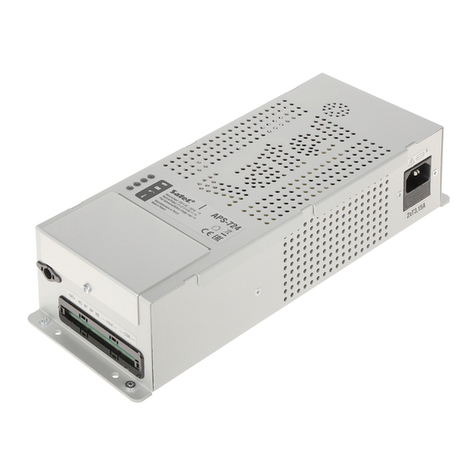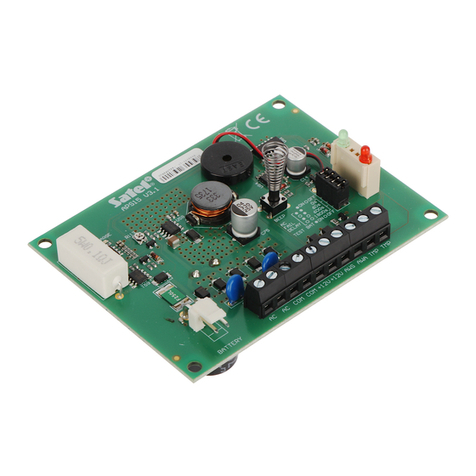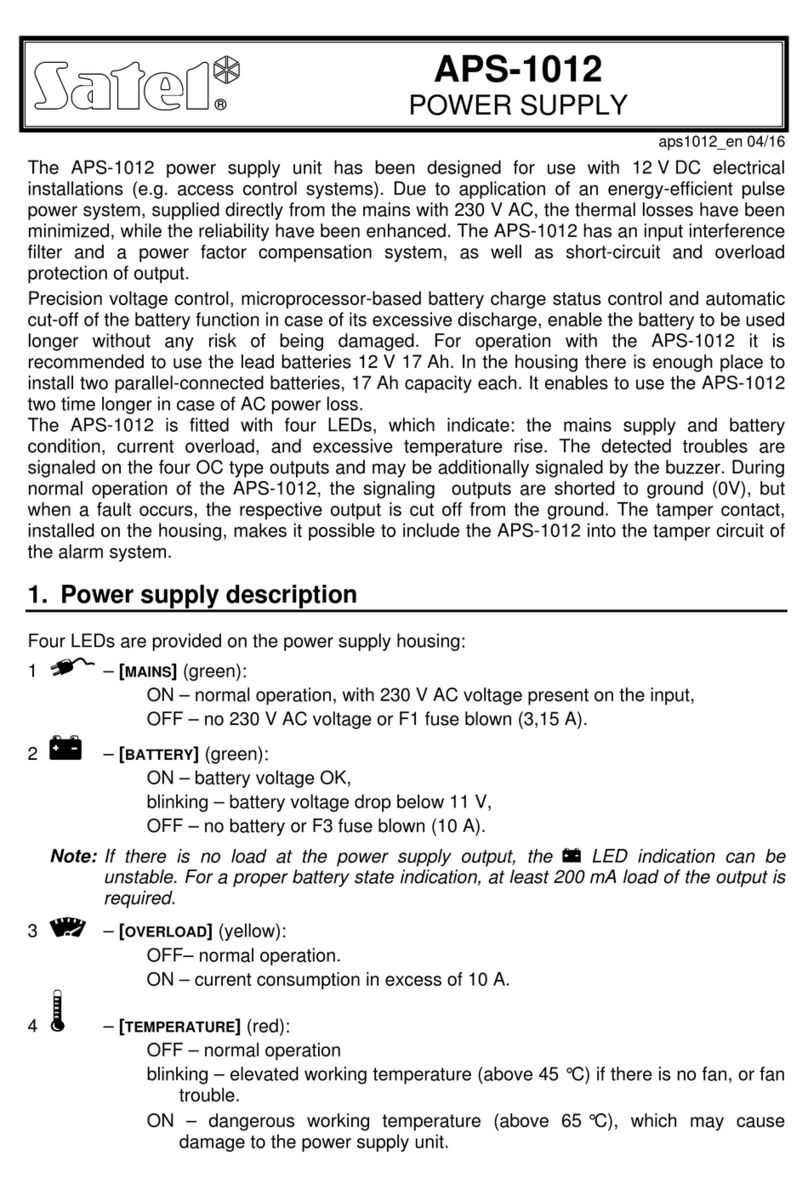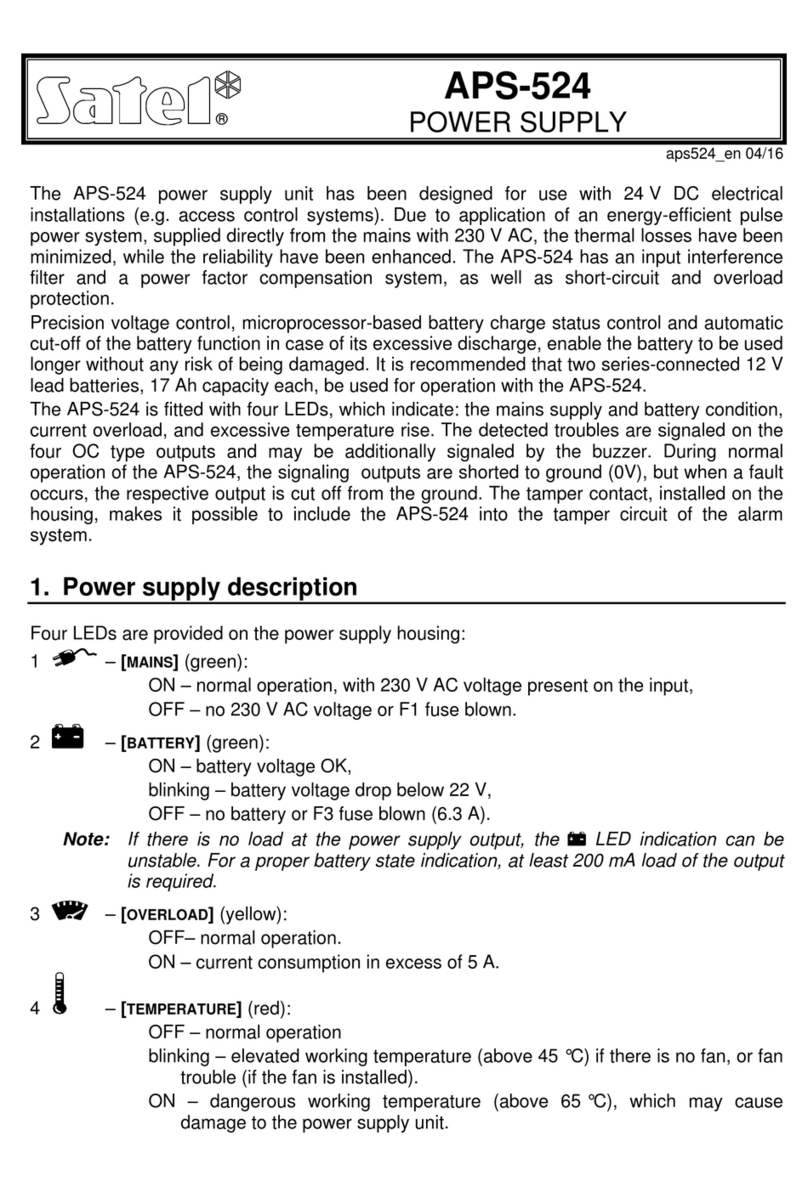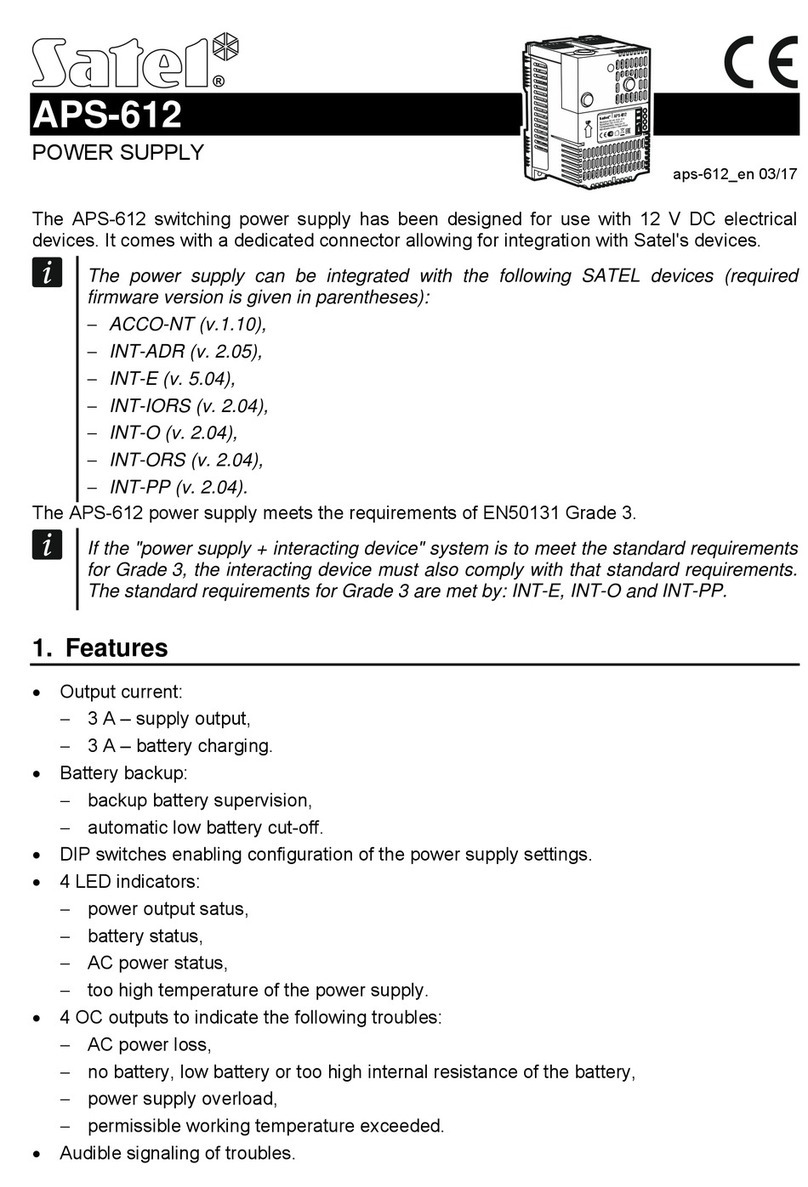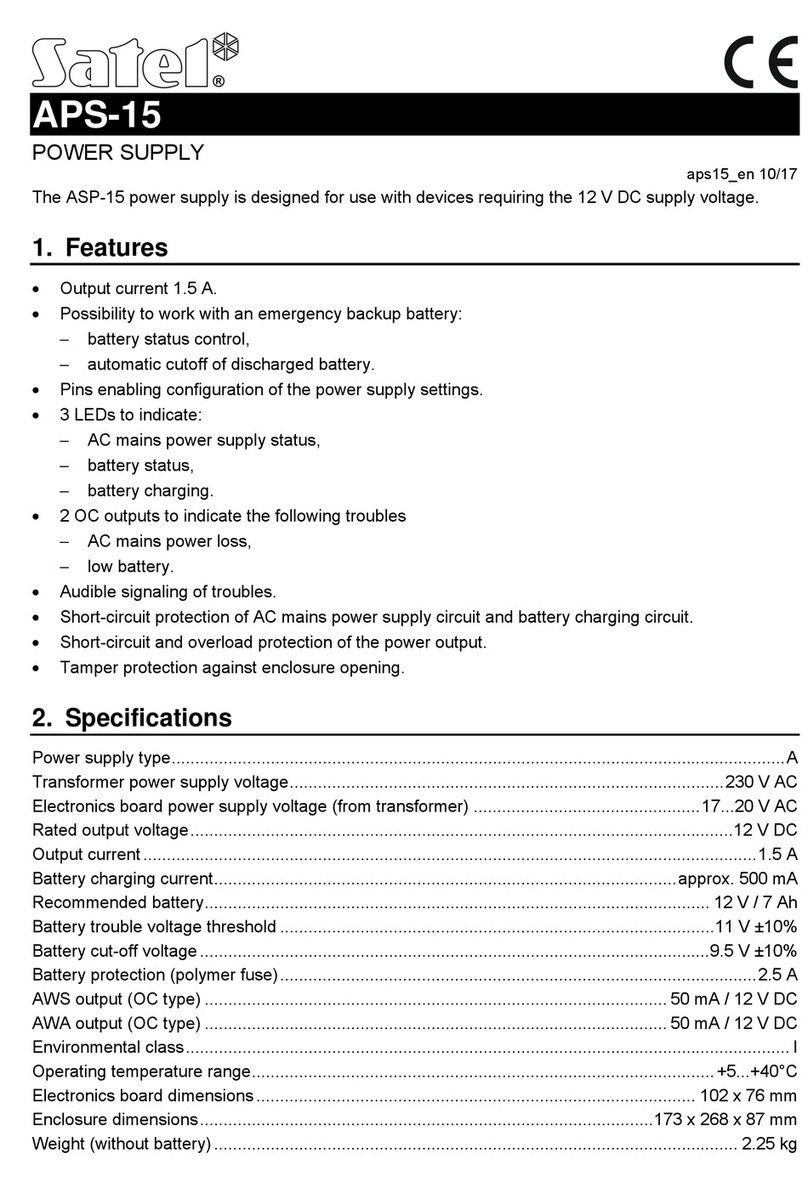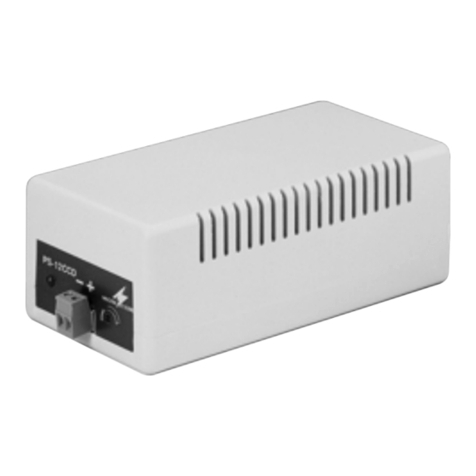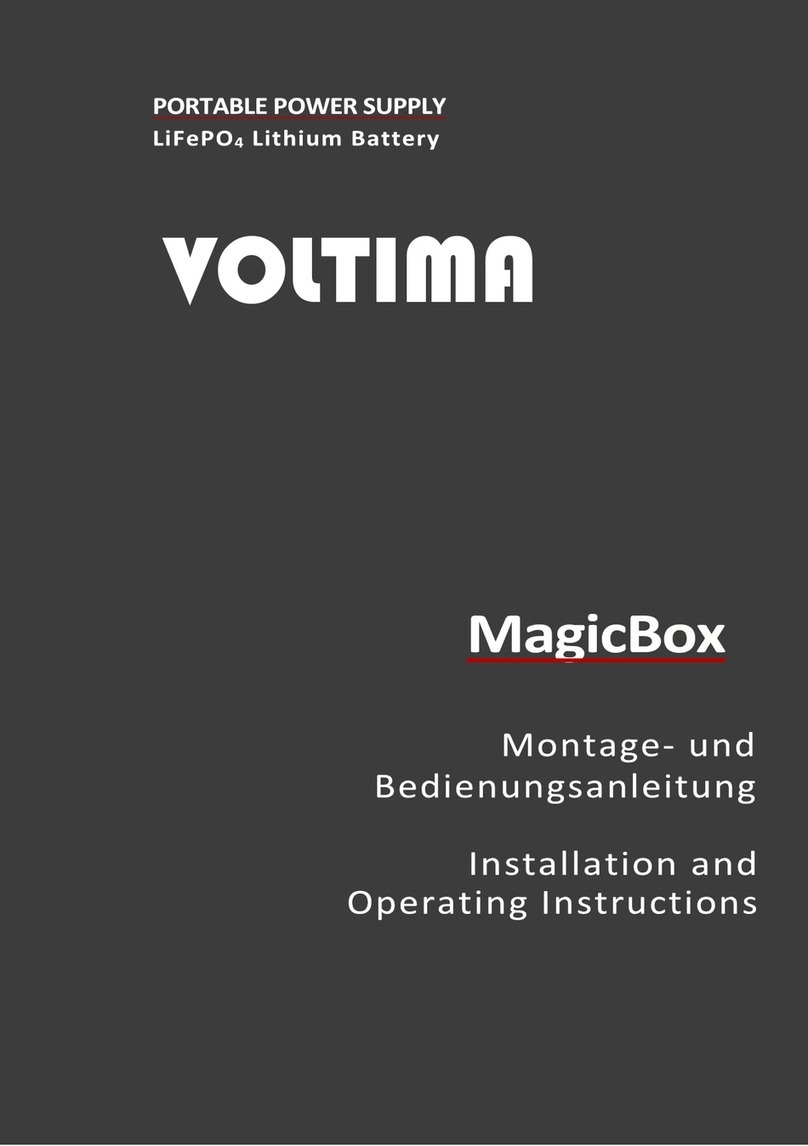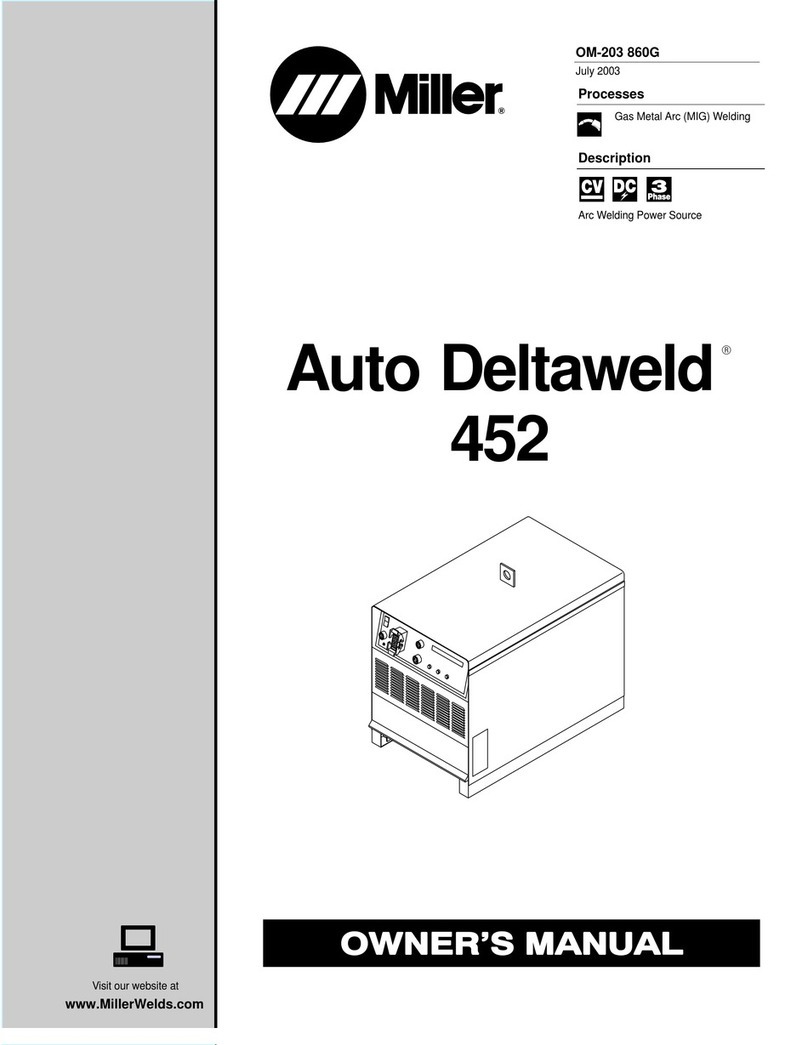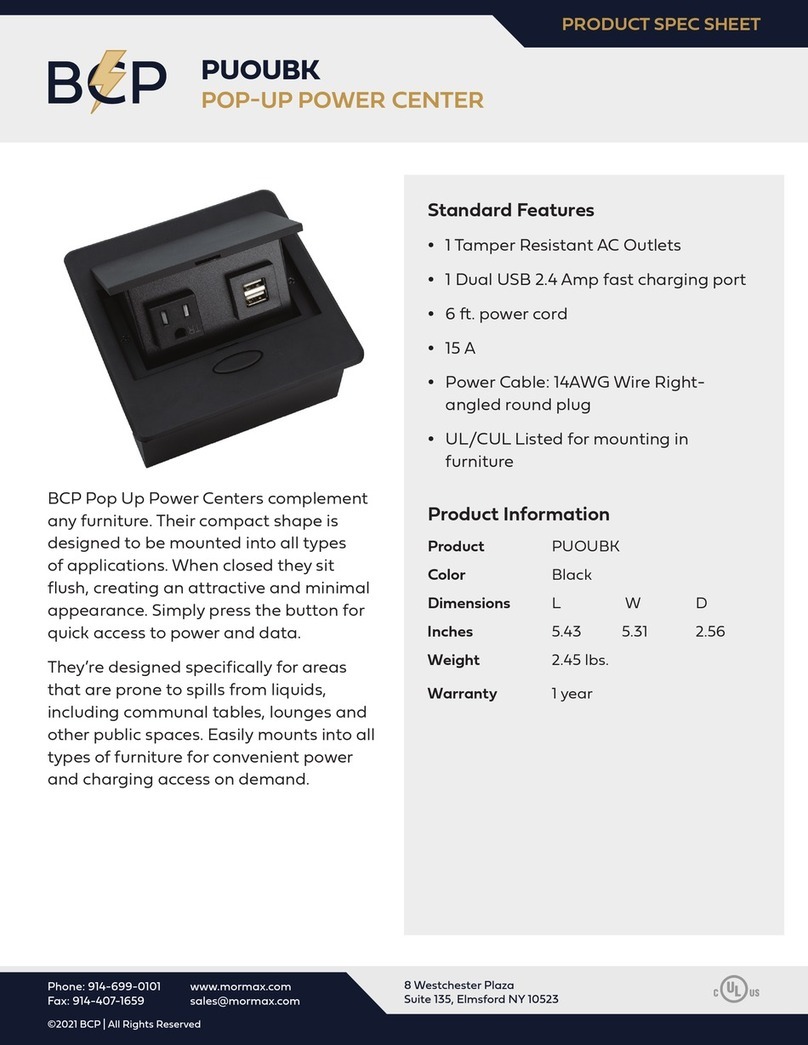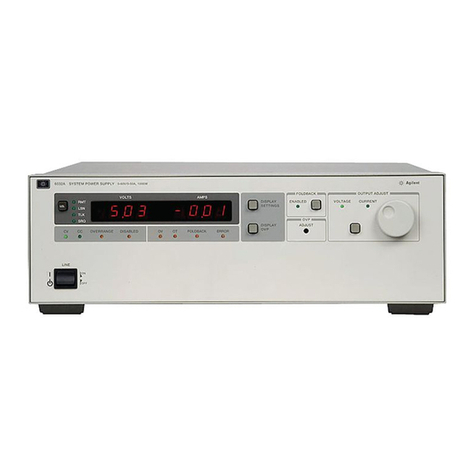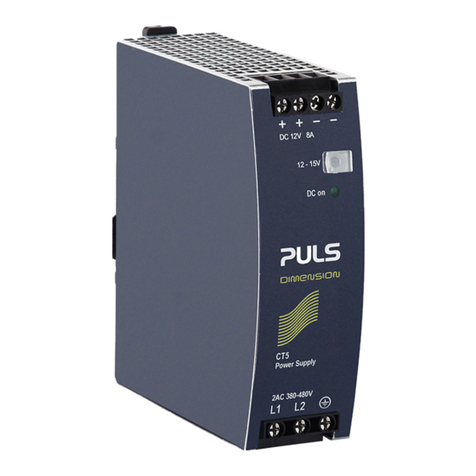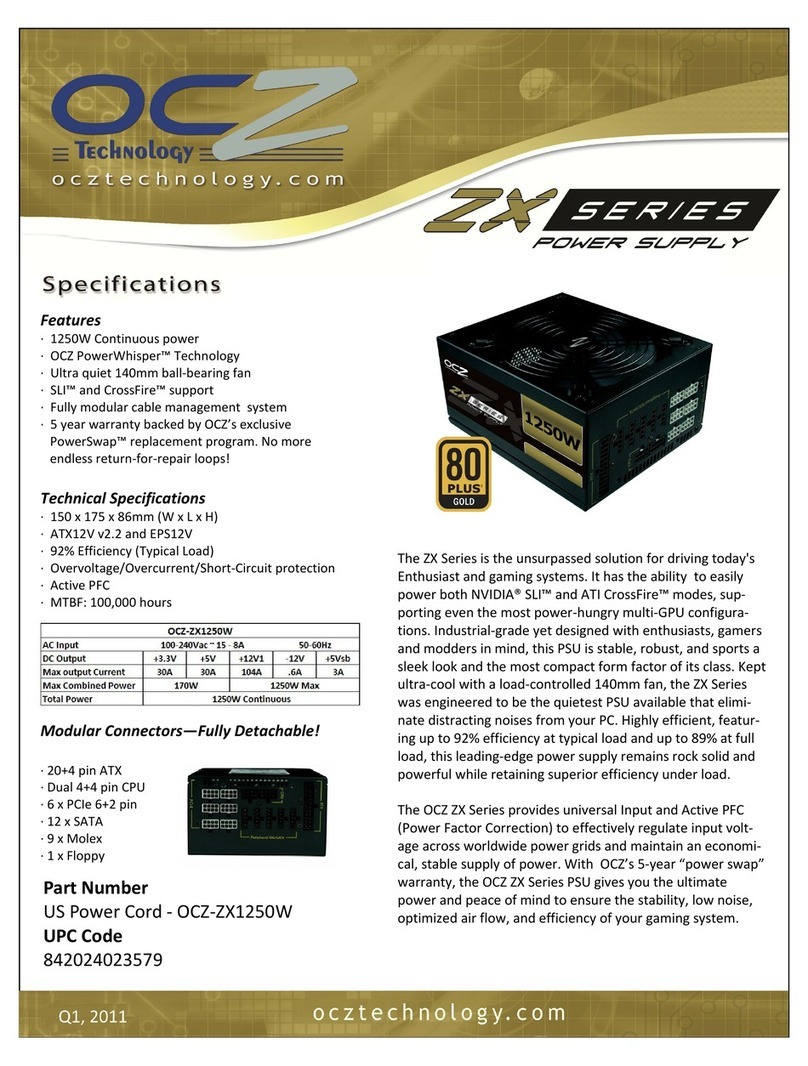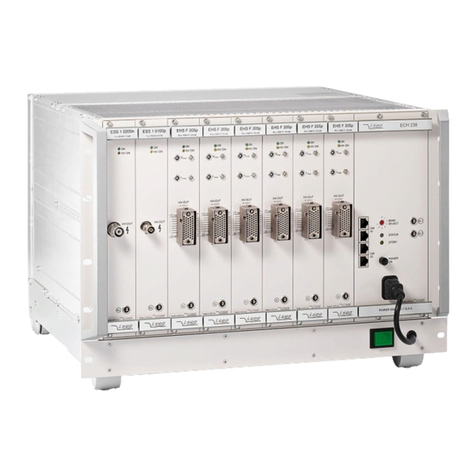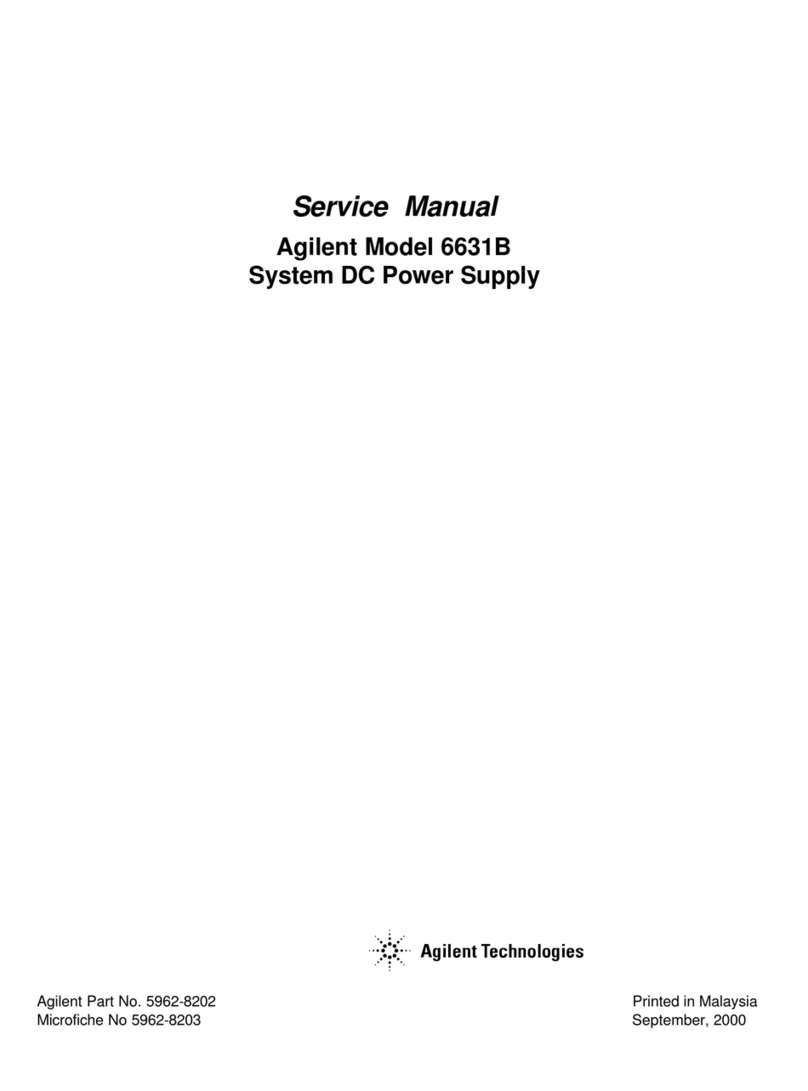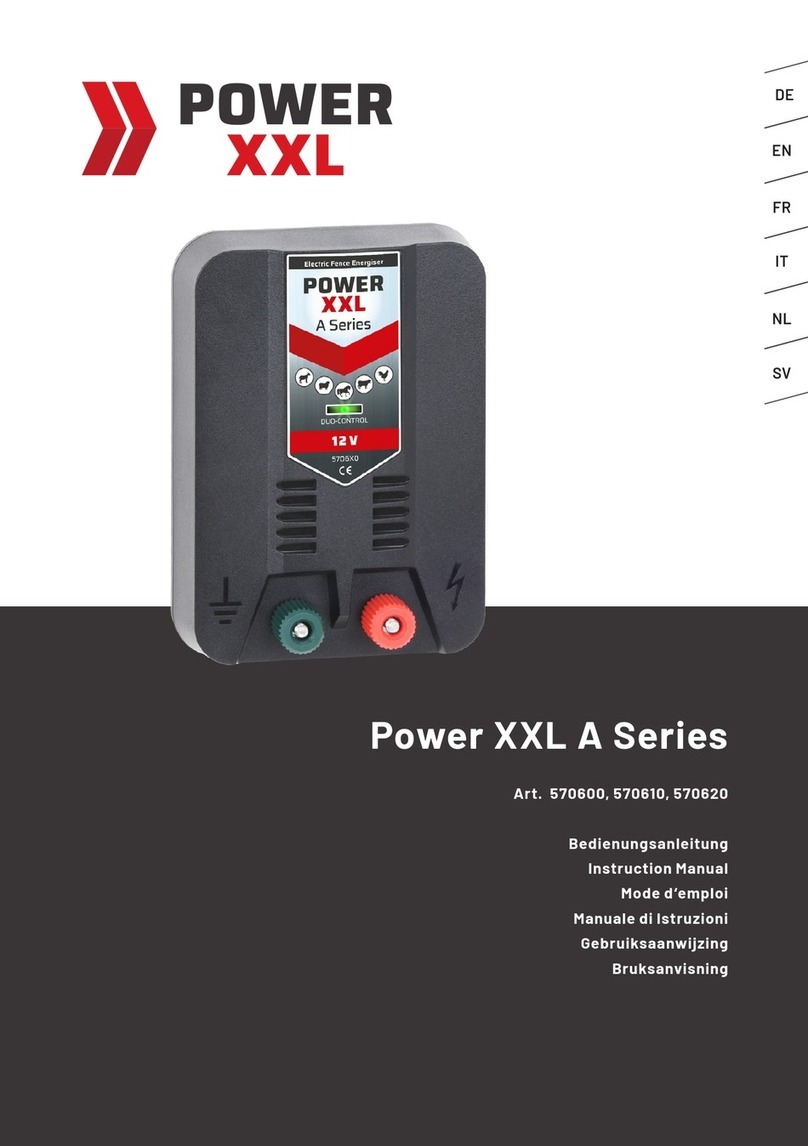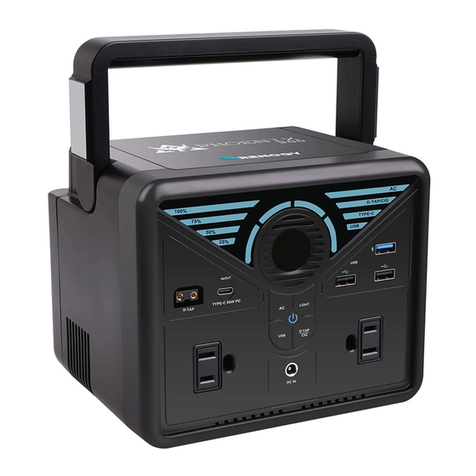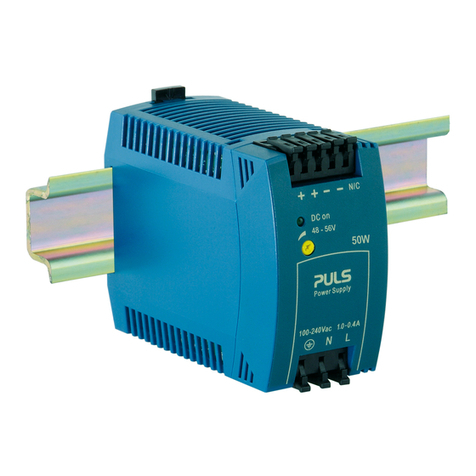SATEL APS-30 S 7
17.Using jumpers, set the power supply operating parameters (see: “Configuring the power
supply”).
18.Insert the battery in the enclosure (Fig. 9) and connect it to the dedicated leads
(the battery’s positive terminal to RED lead, negative terminal to BLACK lead).
19.Replace the cover and secure it to the enclosure base with two screws. Cover the screw
holes with special hole plugs included in the delivery set.
20.Turn on 230 VAC power supply in the circuit to which the transformer is connected.
The power supply unit will start (LEDs will light up).
5. Battery testing by the power supply
The battery is tested every 4 minutes which is indicated by lighting up of the yellow LED .
A full test of the battery charge status can take up to 12 minutes. If the battery voltage drops
below 11 V, the power supply will indicate trouble on the AWB output, and the green LED
will start flashing (optionally, the trouble can be signaled acoustically). If the voltage
drops to about 9.5 V, the battery will be disconnected.
6. Specifications
Power supply type (according to EN 50131)............................................................................A
Transformer power supply voltage...............................................................................230 VAC
Electronics board power supply voltage (from transformer)....................................17...24 VAC
Nominal output voltage (according to IEC 38) ...............................................................12 VDC
Output current
operation with battery connected..................................................................................3 A
operation without battery connected................................................................. 2.5 A / 2 A
Battery charging current (selectable)........................................................................ 0.5 А / 1 А
Recommended battery ............................................................................................ 12 V / 7 Ah
Current consumption of power supply circuits .................................................................80 mA
Battery failure voltage threshold ...............................................................................11 V ±10%
Battery cut-off voltage..............................................................................................9.5 V ±10%
OC type outputs (AWS, AWB).........................................................................50 mA / 12 VDC
Environmental class..................................................................................................................I
Operating temperature range...................................................................................+5...+40 °C
